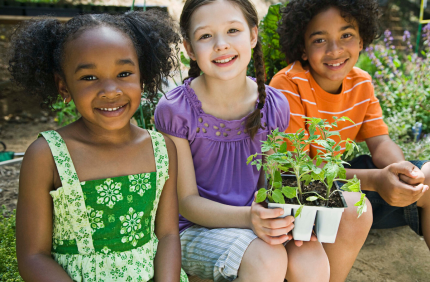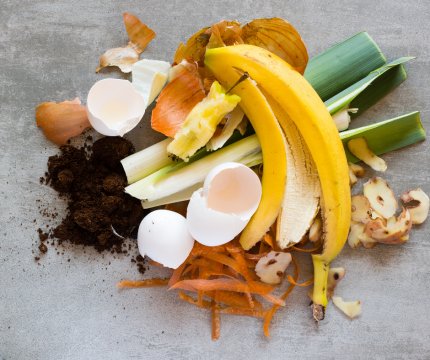
Wildlife in Washington face a wide range of threats, from disease and invasive species to declining habitat and climate change. You can help by being a good steward for wildlife, habitat, and the environment.
Being a good steward means protecting and preserving the world around you. These lessons and activities will help you on your journey to being a good steward for the environment. For ideas on what your family can do to help Washington's wildlife, check out our Earth Day blog.
Materials
Create and maintain wildlife habitat
Habitat is where wildlife and plants grow and live. As people continue to move further into rural areas, there is less room for wild animals and plants. You can be a good steward for wildlife by maintaining and creating habitat in your own backyard.
Activity: Make your backyard a wildlife sanctuary
Join our Backyard Wildlife Sanctuary Program. We will walk you through some simple ways that you can turn your outdoor area into a thriving wildlife habitat. By creating a wildlife sanctuary, you’re helping to offset the 35,000+ acres of wildlife habitat that are converted into housing and urban development each year in Washington.
Discover native plants through these helpful links from some of our partners!
- Plants for small-scale gardens
- Plants ranked by butterfly and moth use
- Native plants for birds
- Native plants and the birds that use them (PDF)
Activity: Make a mini greenhouse
Make your own mini greenhouse and watch your plants sprout to life! Plants provide critical oxygen that we need to survive.
Gather your materials
- Plastic cups
- Push pin
- Soil
- Seeds
- Water
Instructions
- Use a push pin to carefully poke holes in the bottom of your cup.
- Fill the cup with soil and pat down gently.
- Place some seeds in your cup leaving space between each one.
- Cover your seeds with soil.
- Water your seeds.
- Cover the cup with a clear cup and set in a sunny place in your home.
- Once your plants are large enough, you can relocate them to a larger pot or outdoor garden. Don’t forget to recycle the cups!
Activity: Build a worm farm
Watch this 4-minute video about vermicompost and the benefits of worms from Cornell University.
They wriggle, they squirm, they look a little bit slimy, but they are also an excellent example of how something small and seemingly insignificant can actually play a big role in protecting our natural environment and helping it thrive.
When worms tunnel through the earth they help plant roots get water, air, and the nutrient-rich waste that also helps the plants to grow. Worms are fantastic natural recyclers that can convert food scraps from the kitchen – otherwise destined for the landfill site – into compost for the garden or vegetable patch.
More resources
Habitat connectivity – how animals move
We go to the grocery store for food, find shelter from the rain, and return home to sleep. Animals move around their habitat, or migrate, to meet these same needs. However, animals have an increasingly harder time moving across the landscape as more roads, houses, and fences are built. These human structures create pockets of habitat and can make it difficult for animals to move around safely.
Watch this 4-minute video to see a visualization of the challenges deer face when they migrate.
Busy roads can create barriers to animal migration, but they don’t have to! The Interstate-90 wildlife overpass project is connecting habitat for large and small animals to safely cross the busy highway.
Watch this 4-minute video about how wildlife habitat is being connected under and over I-90. You can also watch this 30-minute documentary about this innovative project. Check out some of the animals migrating safely across I-90.
The next time you travel across I-90, report any wildlife sightings to help us understand wildlife movement through the area.
Your backyard also plays a role in habitat connectivity in your neighborhood. Read this short article from The Nature Conservancy and Cornell Lab to learn how your yard can positively contribute to a healthy landscape.
Activity: Why did the grizzly cross the road?
Highways, camp sites, park trails, train tracks, power lines, and other human-made structures impact grizzly bear habitat and their ability to move around safely. By actively trying to understand how grizzlies move from one place to another, researchers hope to help minimize conflict between people and bears.
Listen to this 15-minute podcast episode, Why did the grizzly cross the road? Produced by The Narwhal.
Reduce waste
Humans create a lot of waste from food scraps, packaging, and general garbage. By producing less waste or recycling waste, you can help preserve habitat and reduce greenhouse gas emission that affect the environment.
Activity: Environmental science project
Learn how to do your own environmental science project about reducing, reusing, and recycling waste. This booklet is a step-by-step guide to help you design an exciting science fair project that focuses on the 3Rs of waste management—reduce, reuse, and recycle. Use your science fair project to show how the 3Rs lead to resource conservation. More resources available on the Environmental Protection Agency's website.
Activity: Make a compost bin
Compost is organic material that can be added to soil to help plants grow. Food scraps and yard waste together currently make up more than 28% of what we throw away, and you can compost it instead! Making compost keeps these materials out of landfills where they take up space and release greenhouse gases that are bad for the environment.

Gather your materials
- Large plastic bin with lid, such as 12-gallon storage bin or trash can
- Drill (Ask a parent or other adult for help)
- Shredded newspaper
- Soil
- Dried leaves and/or pine needles
- Food scraps
- Water
Instructions
- Drill 8-10 holes about 1-2 inches apart in the bottom of the bin, and four holes on each side of the bin. This will let air move around the bin to help things decompose.
- Put the shredded newspaper into the bin, filling it up 1/4 of the way.
- Add soil until the bin is half full. Top the soil with a layer of dried leaves or pine needles. Always keep brown material such as this in your bin to keep it from smelling.
- Bury food scraps into the brown material. To do this, roll your bin around (with the lid on) or mix it with a stick.
- Spray the compost with just enough water to get things damp but not soaking wet. Put the lid on.
- Keep a small container in your kitchen and fill it with food scraps. Add the scraps to the compost bin. Just remember to add the same amount of soil and leaves, too.
- Every four to five days, roll the compost bin around or stir the contents with a stick to keep things mixed up. Always keep the compost damp.
- Compost will be ready to use in your garden in one to two months.
Activity: Play Recycle City
Explore Recycle City on the Environmental Protection Agency's website to see how its people reduce waste, use less energy, and save money by doing simple things at home, at work, and in their neighborhoods.